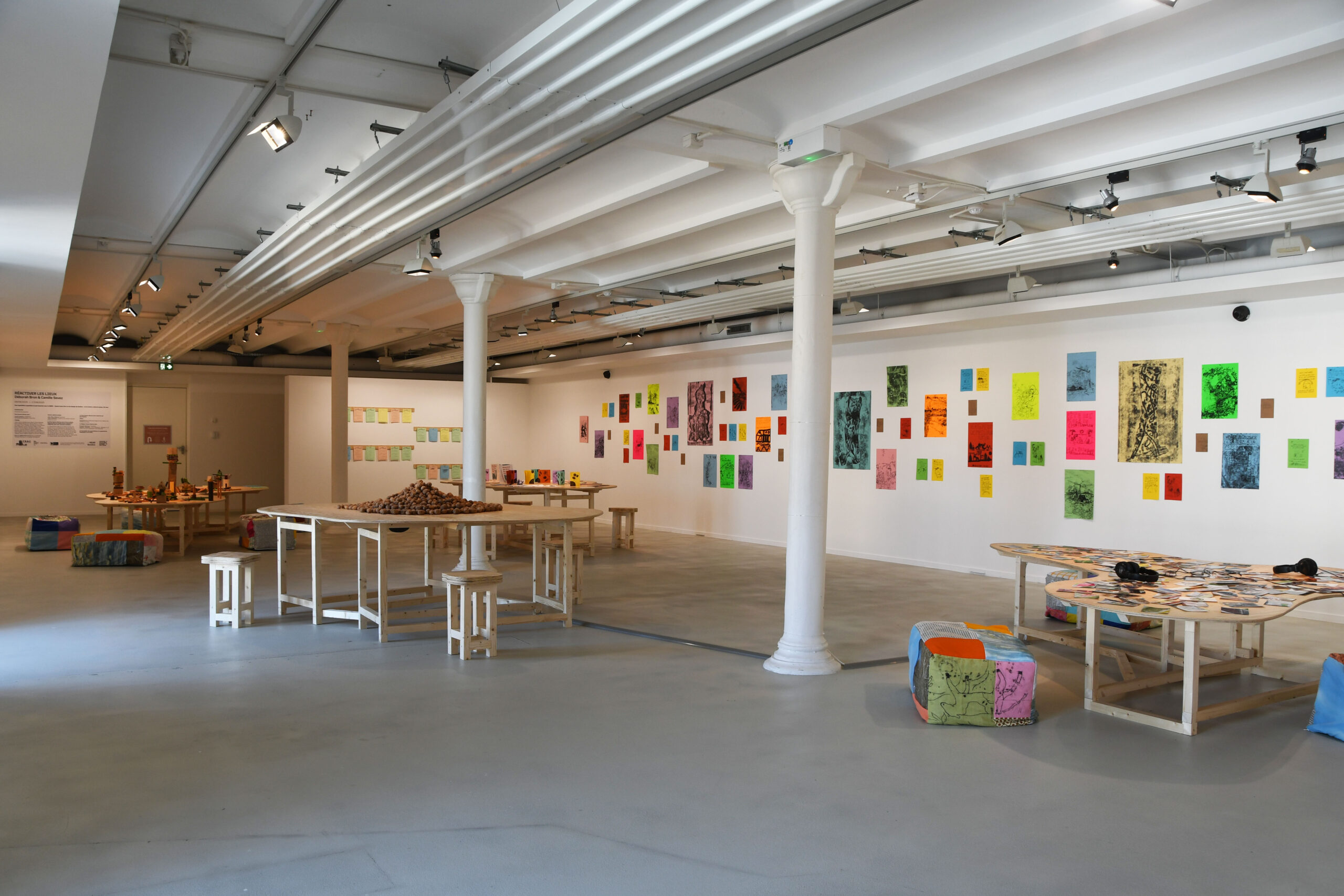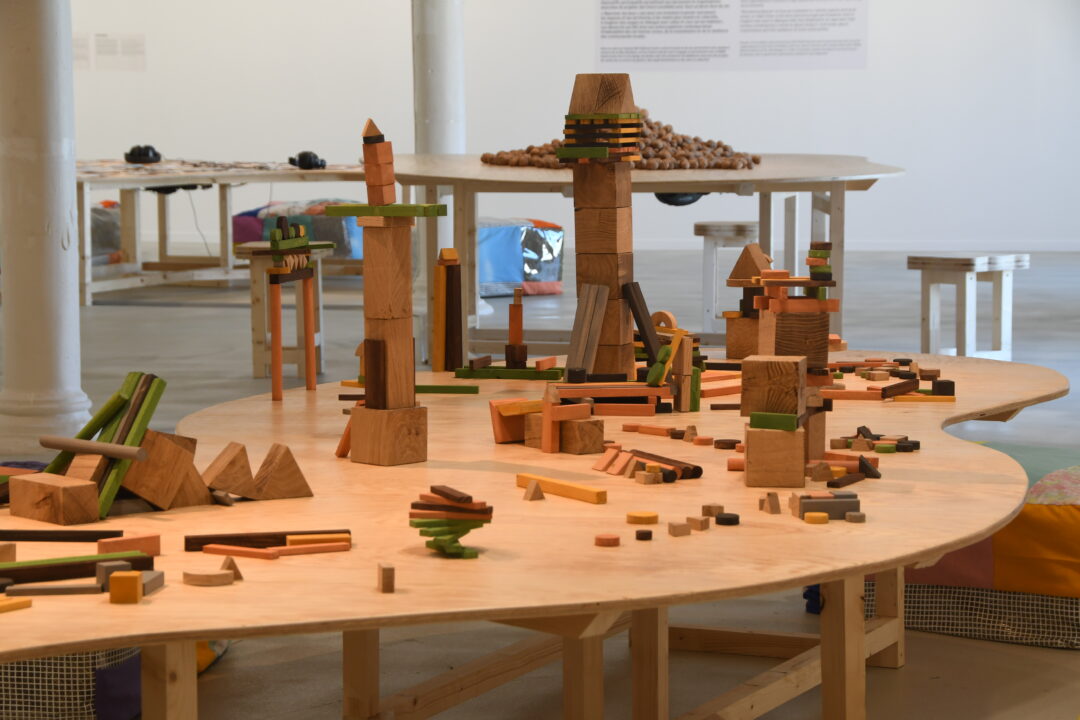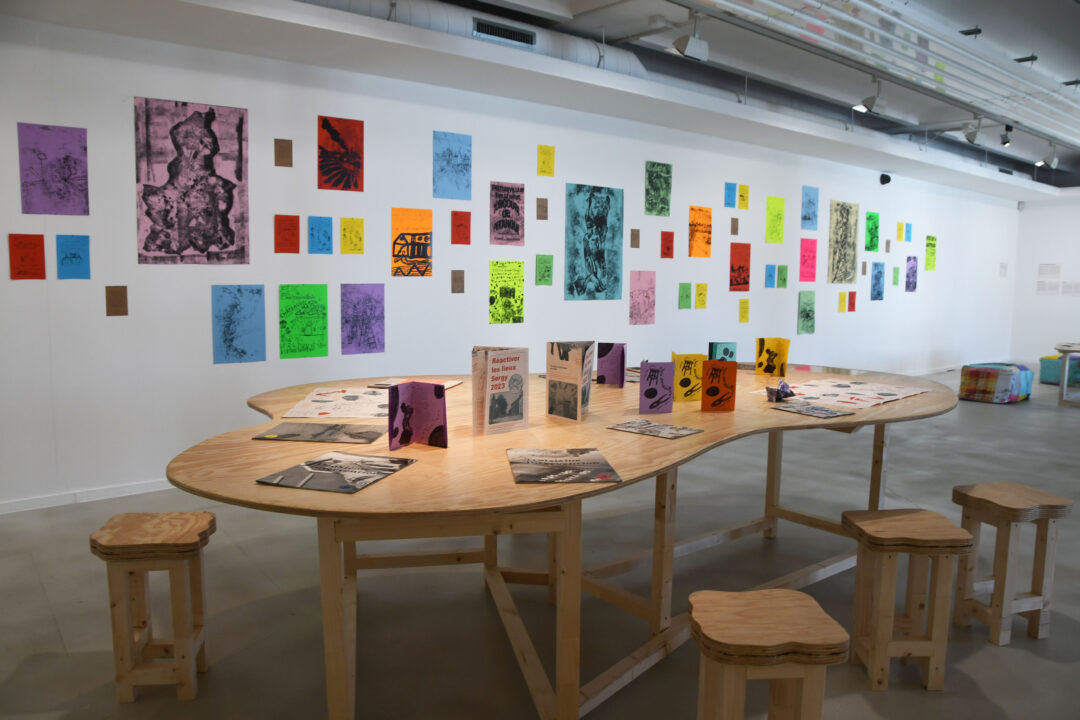Déborah Bron & Camille Sevez

Reclaiming Spaces
Déborah Bron & Camille Sevez
Frac Centre-Val de Loire with the Swiss Cultural Center. On tour.
04.04.2025 — 17.08.2025
Déborah Bron and Camille Sevez’s exhibition at the Frac Centre-Val de Loire is a voyage into the infinitely small in order to reach the infinitely large. Like a trip inward, it submerges itself in the rural life of various French territories — Châteauvilain, Sergy, and Montbard — to meet people, speak of the past, and reactivate spaces.
To Bron and Sevez, village life is not a static landscape but a living web of relationships — between people, places, and memories. When a place disappears, or when people leave, those links dissolve. But instead of sinking into nostalgia, the artists take a proactive approach. They organise gatherings, initiate projects, and host moments of exchange, precisely to rekindle these bonds. The exhibition is not about preserving what was, but proposing what could be — through shared action, collective memory, and presence.
Throughout the three sites, the artists worked closely with local schools — not simply as institutions, but as vital connectors. Schools form the central axis between generations; they are where the village breathes, where knowledge is transmitted, and where ideas take root. Any change in a space comes from the people who live in it, and any change in people begins with education. It is through schools that the landscape can be reshaped — not with blueprints, but with imagination.

Bron and Sevez see themselves less as creators and more as mediators. They initiate, they gather, they gently sway the process — allowing ideas to emerge organically. Their practice bypasses the logic of authorship as ownership, and instead treats art as a work on and with the environment. An environment, by its very nature, is something we share, and its transformation is thus the product of collaboration.
The exhibition space is shaped around a few tables designed specifically for the occasion, each representing an activity: notes and photographs from the actions in the villages, printed matter documenting each project, a table full of wooden blocks inviting visitors to fall back into childhood and play construction games — and of course, the Mondailles. This special word, not found in any dictionary, refers to a centuries-old tradition: the act of gathering, sometimes as an entire village, to break walnuts together and extract the kernels. In the exhibition, the Mondailles (a table with a pile of walnuts waiting to be processed) functions as a platform for dialogue and exchange.
The furniture in the space — poufs made from hay and fabric printed by the artists — plays into the scene and recalls a kind of rustic-modern salon. This is utterly reminiscent of scholarly monks of medieval colleges sitting on haystacks (such the original College of Sorbonne) : places where ideas were debated and challenged. That same spirit is reactivated here. That same spirit is reactivated here. This is not a set to observe, but a dispositif to share, to move through, to inhabit. Sound recordings from workshops and meetings float through the space. We hear human voices, birds, cows — the full spectrum of the places the artists worked in. It’s not edited for clarity or narrative; it’s left raw, polyphonic, alive.
A core method in the artists’ work is the transmission of knowledge through storytelling — as it was in the past, when those who knew would speak, and those who didn’t would listen. This return to oral transmission — from older residents to new arrivals, from grandparents to children — becomes a way of keeping the most valuable parts of the past alive. The internet, for all its endless information, knows only what’s globally important. We may feel informed, but we often remain strangers to our own streets, our own squares, our own villages. The online forgets the offline — and that which matters locally: names of plants, local customs, geographic secrets.
What Bron and Sevez do is reactivate a kind of knowledge that exists only in place — knowledge that cannot be Googled, only lived. In doing so, they offer a subtle yet firm refusal of our online detachment. Their work invites us to ground ourselves again — to know not the entire world, but our own surroundings.
In many ways, Réactiver les lieux / Reclaiming Spaces is visionary. Though modest in scale (for now), its implications are wide. It proposes a return to smaller, interconnected communities, without falling into the trap of rural gentrification. It’s not about moving in or taking over, but about asking how we interact with spaces — how we participate in them, not consume them. A space, after all, is not an empty container. It is a mesh of symbiotic relationships.
To reactivate space through memory is to reintegrate it into our collective subconscious. Bron and Sevez don’t produce objects — but interactions. They shape the social landscape by leaving traces of intergenerational care.

Head image : View of the exhibition « Réactiver les lieux / Reclaiming Spaces », Déborah Bron & Camille Sevez, 04.04 — 17.08.2025 © Frac Centre-Val de Loire.
- Share: ,
- By the same author: Streaming from our eyes, Sanam Khatibi, Ho Tzu Nyen, GESTE Paris, The summer of collaboration at CRAC Alsace and CRÉDAC: “L’amitié : ce tremble” and "Tripple Dribble",
Related articles
Performa Biennial, NYC
by Caroline Ferreira
Camille Llobet
by Guillaume Lasserre
Thomias Radin
by Caroline Ferreira